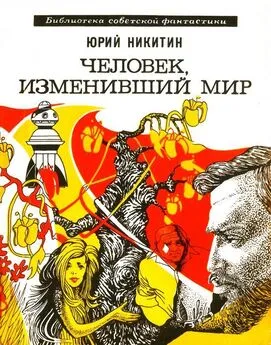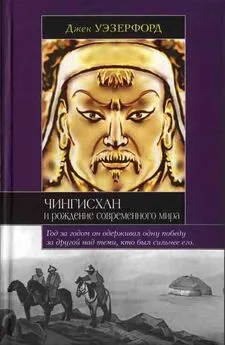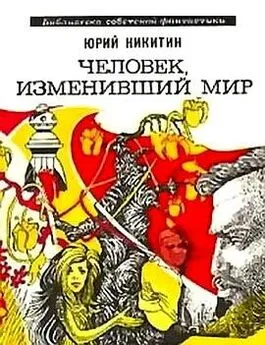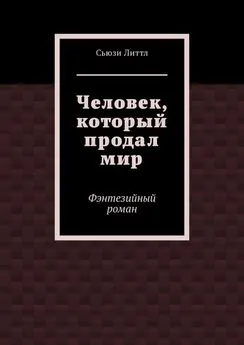Фрэнк Маклинн - Чингисхан. Человек, завоевавший мир
- Название:Чингисхан. Человек, завоевавший мир
- Автор:
- Жанр:
- Издательство:АСТ
- Год:2019
- Город:Москва
- ISBN:978-5-17-095186-4
- Рейтинг:
- Избранное:Добавить в избранное
-
Отзывы:
-
Ваша оценка:
Фрэнк Маклинн - Чингисхан. Человек, завоевавший мир краткое содержание
Чингисхан. Человек, завоевавший мир - читать онлайн бесплатно ознакомительный отрывок
Интервал:
Закладка:
431
'Cat out of the bag' occurs in Gumilev, Imaginary Kingdom p. 257. Cf Rachewiltz: 'As we would expect, in all these sources Jamuga appears directly or indirectly as the villain but occasionally the cat is out of the bag [my italics], as it were, and we catch a glimpse of what may have been the true state of affairs' (Commentary p. 472). As for the quasi Gnostic writing about Jamuga, Gumilev has a good description: 'a political cypher which has been deliberately served up as a riddle' (Gumilev, Imaginary Kingdom p. 144).
432
Conan Doyle, The Sign of Four, Chapter Six.
433
Tertius gaudens — «третий радующийся» ( лат .), то есть третья сторона, испытывающая удовлетворение от конфликта двух других сторон.
434
SHO pp. 187–189; SHR pp. 130–133.
435
This is a variant on the subject-predicate mistake famously analysed by Ludwig Feuerbach. 'God made Man' says the Christian catechism, whereas for Feuerbach and all atheists the reality is that man made God (see Feuerbach, Lectures on the Essence of Religion (1849)).
436
«Сокровенное сказание», § 201. — Прим. пер .
437
SHO pp. 187–189; SHR pp. 130–132.
438
SHC pp. 137–141.
439
For Eljigidei see JB I pp. 184, 249, 271–274; SHO pp. 215–219, 271–274; SHR pp. 157–158, 209–213; Hambis, Genghis Khan pp. 29–30.
440
Rachewiltz, Commentary p. 757; Ratchnevsky, Genghis Khan p. 88; Gumilev, Imaginary Kingdom p. 235.
441
For the contrast with Daritai see Ratchnevsky, 'Die Rechtsverhaltnisse bei den Mongolen im 12–13 jahrhundert,' Central Asiatic Journal 31 (1987) pp. 64–110 (at pp. 102–103). For the implications of Temujin's atrocity in terms of Mongol attitudes to oath taking see F. Isono, 'A Few Reflections on the Anda Relationship,' in Clark & Draghi, Aspects of Altaic Civilization pp. 81–87; Isono, 'More about the Anda Relationship,' Journal of the Anglo-Mongolian Society 8 (1983) pp. 36–47; Henry Serruys, 'A Note on Arrows and Oaths among the Mongols, 'Journal of the American Oriental Society 78 (1958) pp. 279–294.
442
Знамя из тонкого белого войлока с девятью хвостами яка (символа силы), означающими девять главных монгольских племен. — Прим. ред .
443
Гумилев Л. Н. Поиски вымышленного царства (Легенда о «государстве пресвитера Иоанна»). — М.: Айри-Пресс, 2002. — Прим. пер .
444
Gumilev, Imaginary Kingdom p. 259.
445
RT I pp. 72–74; Krause, Cingis Han pp. 27, 65.
446
SHO p. 182; SHR pp. 125–126.
447
RT I pp. 204–205; Rachewiltz, Commentary pp. 724–725, 730–732. Some say Toqto'a was not killed until 1208, but I follow Rachewiltz in thinking 1205 overwhelmingly likely (ibid. pp. 734–735).
448
Автор называет сына Тохтоа-беки тем же именем, что и сына Таян-хана — Quqluq, Кучлук в русскоязычной исторической литературе или Кучулук в «Сокровенном сказании». В «Сокровенном сказании» упоминаются Худу (старший сын), Гал, Чилаун (§ 198). — Прим. пер.
449
«Сокровенное сказание», § 199. — Прим. пер .
450
SHO p. 181; SHW p. 304; SHR pp. 126–128; SHC pp. 133.
451
Свинья учит Минерву ( лат .).
452
Gabriel, Subotai p. 20.
453
Rachewiltz, Commentary pp. 735–736; Krause, Cingis Han p. n.
454
RT I p. 204; SHC p. 141; SHO pp. 190–191; SHR pp. 133–134.
455
Rachewiltz, 'The Title Chinggis Qan/Qaghan Reexamined,' in Heissig & Sagaster, Gedanke und Wirken pp. 281–298 (esp. pp. 282–288). For the earlier interpretations see Pelliot, 'Notes sur le "Turkestan",' loc. cit. p. 25; Ratchnevsky, Genghis Khan, pp. 89, 246–247; Pelliot, Notes sur Marco Polo I pp. 296–303; Vladimirtsoy Genghis pp. 37–38.
456
Telfer, Johann Schiltberger.
457
Moule SC Pelliot, Marco Polo I pp. 222–223. For the cult that developed around Genghis's banner see Pelliot, 'Notes sur le "Turkestan",' loc. cit. p. 32.
458
For the formation of the Mongol state in 1206 and some of the implications see Lane, Daily Life pp. 4, 12; A. M. Khazanov, 'The Origin of Genghis Khan's State: An Anthropological Approach,' Ethnografia Polska 24 (1980) pp. 29–39; A. Sarkozi, 'The Mandate of Heaven. Heavenly Support of the Mongol Ruler,' in Kellner Heinkele, Altaica Berolinensia pp. 215–221.
459
SHO pp. 194–195, 205–207; SHR pp. 137–138, 145–148; SHC p. 146.
460
RT I pp. 91–93.
461
SHO pp. 195–196; SHR p. 138; SHC p. 147; Pelliot, Campagnes p. 138.
462
SHO pp. 191–192, SHR pp. 134–136.
463
Mostaert, Sur quelques passages p. 74; SHC pp. 148–149; SHO pp. 177–179. For some interesting reflections on Jurchedei see Rachewiltz, Commentary pp. 787–788.
464
SHC p. 153; SHO pp. 202–203; SHR p. 143; Pelliot, Campagnes pp. 155, 164, 340–341.
465
SHO pp. 209–210; SHR p. 151.
466
SHO pp. 208–209; SHR pp. 149–150.
467
SHO pp. 202, 207, 225; SHR pp. 143, 148, 167.
468
SHO p. 201; SHR p. 142; SHC pp. 129, 153; Mostaert, Sur quelques passages p. 129; Grousset, Conqueror of the World. For the higher seating of the paladins see Dawson, Mongol Mission p. 57.
469
For the nine paladins see Elisabetta Chiodo, 'History and Legend: The Nine Paladins of Cinggis (Yisiin orliig) according to the "Great Prayer" (Yeke ocig),' Ural-Altaischer Jahrbiicher 131 (1994) pp. 175–225 (esp. pp. 207–210). For the peculiarity of Qubilai's position see Rachewiltz, Commentary pp. 793–794.
470
Соответствующими изменениями ( лат .).
471
Послание к Галатам святого Апостола Павла, 3:28.
472
Galatians 3: 18.
473
Vladimirtsov, Le regime social pp. 110–118.
474
Buell, Dictionary p. 287.
475
'The genealogies of the medieval Mongols… were ideological statements designed to enhance political unity, not authentic descriptions of biological relationships' (Franke & Twitchett, Cambridge History p. 325). Bodonchar stories usually involved the 'holy fool' or halfwit, who got the better of his supposed intellectual superiors (Rachewiltz, Commentary p. 260). Bodonchar's mother was Ah-lan Qo'a, previously married to Dobun-Mergen, said to be a Cyclopean figure with one eye (Buell, Dictionary p. 103, 122–123, 149).
476
Bacon, Obok pp. 47–65; Vladimirtsov, Le regime social pp. 56–74.
477
For a complete reassemblage of this jigsaw puzzle see Bold, Mongolian Nomadic Society.
478
Neil L. Whitehead, 'The Violent Edge of Empire,' in Ferguson & Whitehead, War in the Tribal Zone pp. 1–30.
479
Rudi Paul Lindner, 'What was a Nomadic Tribe?' Comparative Studies in Society and History 24 (1982) pp. 689–711. Unbelievably, there is yet another problem, as Rachewiltz notes: 'Unfortunately many of the problems concerning Cinggis's own lineage and the origin of the Mongol clans cannot be solved because the traditions in the Persian and Chinese sources and in the Secret History cannot be reconciled with each other' (Rachewiltz, Commentary p. 236).
480
Vladimirtsov, Le regime social pp. 110–112; Jagchid & Hyer, Mongolia's Culture pp. 19–72, 245–296; Lattimore, 'Honor and Loyalty: the case of Temujin and Jamukha,' in Clark & Draghi, Aspects pp. 127–138 (at pp. 130–132).
481
Fletcher, Studies pp. 17–19.
482
Bold, Mongolian Nomadic Society p. 110.
483
Lattimore, Studies in Frontier History pp. 510–513 (at p. 507).
484
Buell, Dictionary pp. 245–246.
485
SHC pp. 161–167.
486
JB I p. 37.
487
Asimov & Bosworth, History of Civilizations iv part 1 pp. 250–251.
488
For Bujir see Rachewiltz, In the Service pp. 131–135.
489
SHO p. 210; SHR p. 151.
490
Rachewiltz, Commentary pp. 763–765.]. В интересах сохранения esprit de corps [Дух команды, сословный дух ( фр .).
491
JB I p. 32; Barthold, Turkestan p. 386 Spuler, The Muslim World II p. 36.
492
Michael C. Brose, 'Central Asians in Mongol China: Experiencing the "other" from two perspectives,' Medieval HistoryJournal 5 (2002) pp. 267–289.
493
Josiah Ober, 'I Besieged That Man"; Democracy's Revolutionary Start,' in Raaflaub et al, Origins of Democracy pp. 83–104; Lambert, Pkratries; Leveque, Cleisthenes; Forrest, Emergence of Greek Democracy.
494
For these earlier manifestations see Jean-Philippe Geley, 'L'ethnonyme mongol a l'epoque рrecinggisquanide (XIIe siede),' Etudes Mongoles io (1979) pp. 59–89 (esp. pp. 65–83); P. B. Golden, 'Imperial Ideology and the Sources of Political Unity amongst Pre-Cinggisid Nomads of Western Eurasia,' Archivum Eurasiae Medii Aevi 2 (1982) pp. 37–76; Thomas T. Allsen, 'Spiritual Geography and Political Legitimacy in the Eastern Steppe,' in Claessen & Oosten, Ideology pp. 116–135 (esp pp. 124–127); Rachewiltz, Commentary p. 296.
495
Lane, Daily Life p. 15.
496
Rachewiltz, Commentary pp. 817–842.
497
M. Biran, 'The Mongol Transformation from the Steppe to Eurasian Empire,' Medieval Encounters 10 (2004) pp. 338–361. Almost every writer on Genghis emphasises his supposed debt to the Khitans (see Krader, Social Organisation p. 201). But as Biran underlines, the points of similarity were wholly artificial. The Mongols were much more destructive; they favoured direct, the Khitans indirect, rule; the Mongols depended on continuous expansion and paid their troops with booty, not wages; and the Khitans never mastered mass mobilisation for vast conquests (Biran, Qara Khitai pp. 202–206).
Читать дальшеИнтервал:
Закладка:


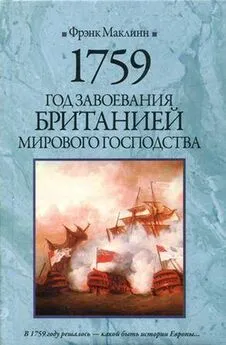
![Ксения Чепикова - Человек, научивший мир читать [История Великой информационной революции]](/books/1059757/kseniya-chepikova-chelovek-nauchivshij-mir-chitat-ist.webp)
